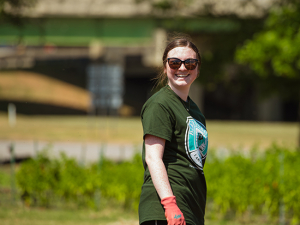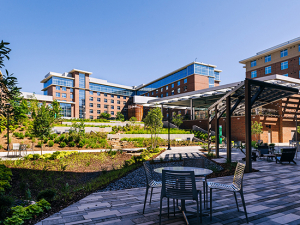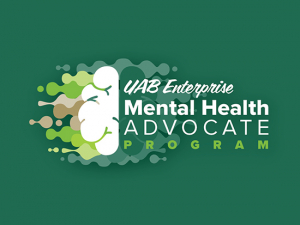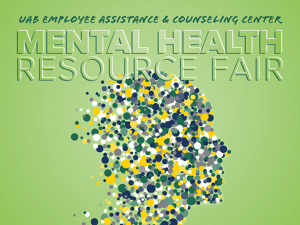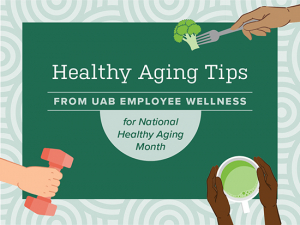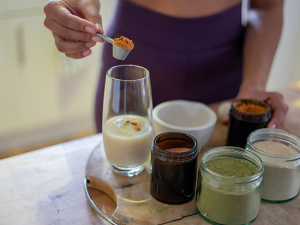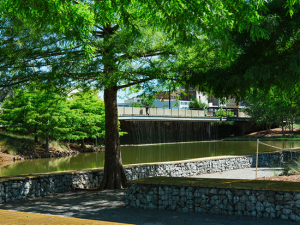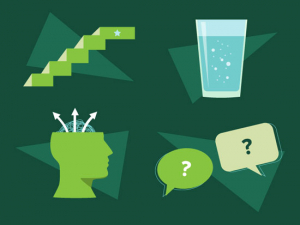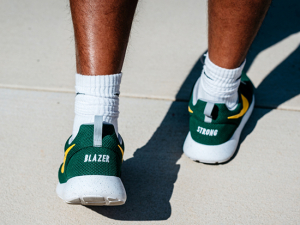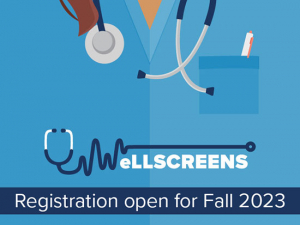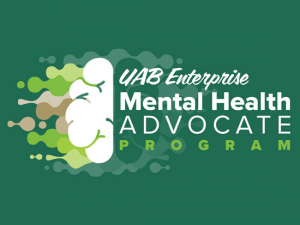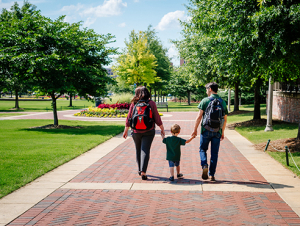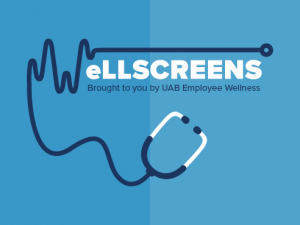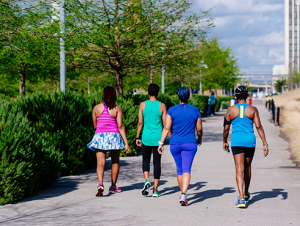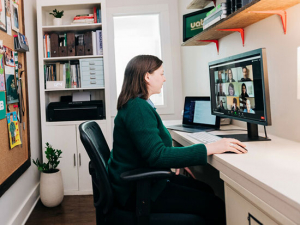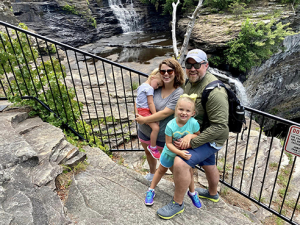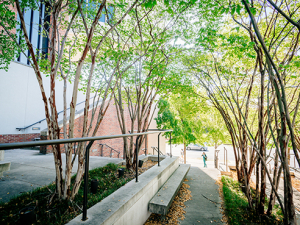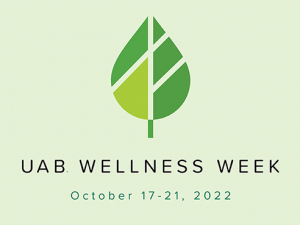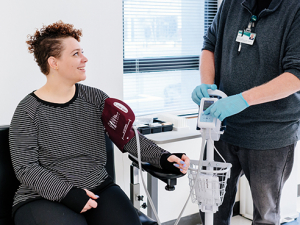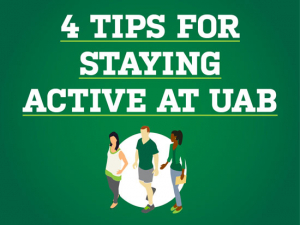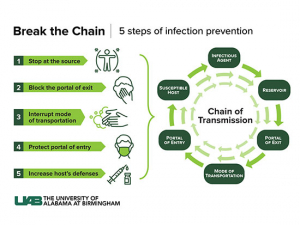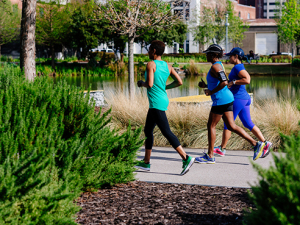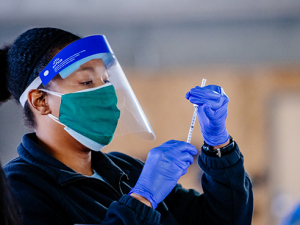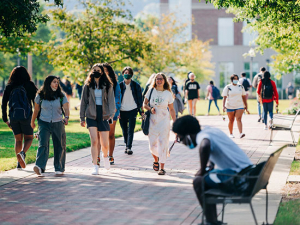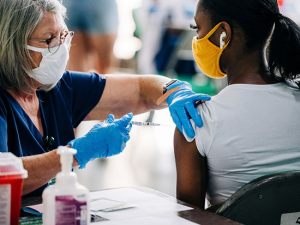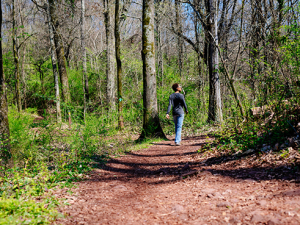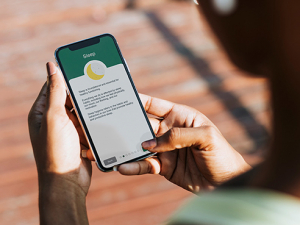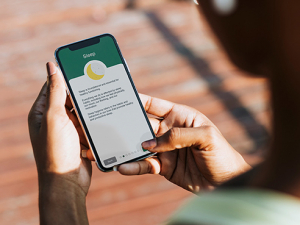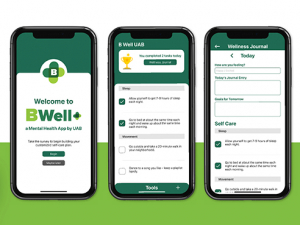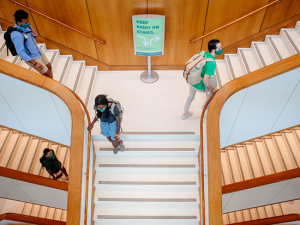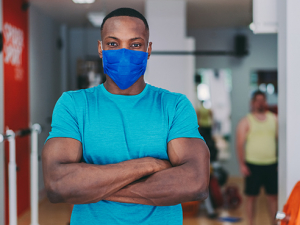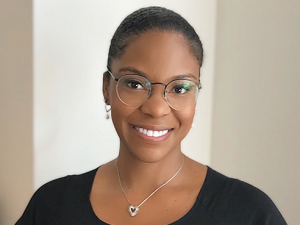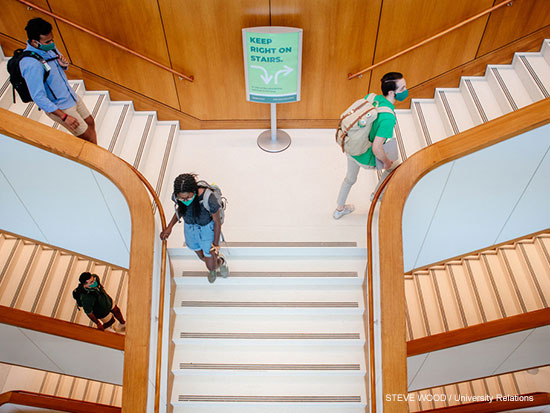 Blazers Bounce Back helps students navigate the ups and downs of life by building resiliency skills.If ever there were a time to develop a new approach to coping with setbacks, challenges and failures — or perceived failures — the COVID-19 pandemic would be a great choice.
Blazers Bounce Back helps students navigate the ups and downs of life by building resiliency skills.If ever there were a time to develop a new approach to coping with setbacks, challenges and failures — or perceived failures — the COVID-19 pandemic would be a great choice.
With this in mind, every UAB student in the upcoming spring semester now has access to a short course that has helped thousands of students do just that: Blazers Bounce Back.
Student Counseling Services has been offering this in-person workshop on resiliency — primarily to first-year students, but also to student organizations and programs — for several years. “Every single person is resilient,” said Angela Stowe, Ph.D., director of Student Counseling Services. “We have witnessed tremendous resilience throughout the past year as we have all navigated COVID-19 and the impacts it has had on every aspect of our lives.” The good news, Stowe added, is that resiliency is like a muscle. “You can do things to grow your resiliency and make it stronger. The more you practice it, the stronger your skills become.”
Resiliency basics
In fall 2020, Blazers Bounce Back began offering those tools in a Canvas module that “teaches basic skills and concepts of resiliency as a way to manage the inevitable stress of college,” as well as the unique stresses of the COVID-19 pandemic, Stowe said. It is built around what Stowe calls the “four Rs” of resiliency:
- recognize
- reframe
- reflect
- reach out
The four Rs are “a framework to approach setbacks, challenges and failures, or perceived failures,” Stowe said. (See The Four Rs of resiliency.)
Interested in adding Blazers Bounce Back to your course?Faculty can request that Blazers Bounce Back be copied into their course’s Canvas page or request to enroll as a faculty member so they can see the course themselves. Find the request forms, a direct link for students and more course information on the Student Counseling Services website here. |
Blazers Bounce Back was developed “as a way to really focus our education on the skills and resources we know students need to be successful and navigate the stressful journey of college,” Stowe said. “UAB students are high-achieving, goal-oriented and very smart and hard-working. However, these skills don’t necessarily give you what you need to respond to setbacks and failure, so we wanted to help provide a way for students to know how to build their resiliency skills.”
‘Great feedback’
More than 1,000 students in 49 separate courses or sections across campus were enrolled in the Blazers Bounce Back Canvas course in fall 2020 at the request of their instructors. “We have had great feedback, and it has helped us shape the presentation to meet the needs of the students,” Stowe said. On a post-workshop evaluation, one student wrote: “I got motivation to use stress and turn it into something positive.” Another student said the best aspect of the presentation was learning that “the most common thing at UAB is anxiety, so I know I am not alone.”
“Students gain an understanding of the common stressors that college students face, not only at UAB but nationwide,” said April Coleman, a clinical counselor and outreach coordinator for Student Counseling Services who has helped to develop and adjust the Blazers Bounce Back content based on participant feedback. Common stressors include family, financial and academic concerns. “Being able to speak to these challenges allows us to be more personable and students quickly learn they are not alone,” Coleman said. They also find it helpful to learn the difference between the stress itself and the internal and external stressors that cause stress, and the importance of identifying those stressors that they can control, and those they cannot. “Recognizing and acknowledging their feelings and emotions and reframing their thoughts, while adjusting and transitioning, is the heart of Blazers Bounce Back,” Coleman said.
Self-help, self-directed
This spring, “every single UAB student will have access to these tools as part of a self-help, self-directed course in their Canvas dashboard,” Stowe said. Faculty will be able to request that the course be copied into their classes’s Canvas pages, “which gives them the ability to customize the eCourse in a way that fits with their course goals,” Stowe said.
Victoria Smith, associate director of the Office of First Year Experience, has used Blazers Bounce Back for several years to support new students’ transition to UAB within the University Academic Success Center’s first-year experience courses, including undeclared students, students in the Blazing Start program and some transfer students. “The transition from high school to college — or, for many transfer students, from a two-year to a four-year institution — involves multiple aspects that we acknowledge can be challenging to handle at once,” Smith said.
Join inTake the Blazers Bounce Back course as a student or find out how to incorporate it in another course on this page. |
The pandemic has added new challenges, Smith noted, “such as requiring students to engage in more virtual learning, whereas their entire high-school experience prepared them for more in-person environments.” The same goes for social interactions, she said. “Also, more UAB students are living at home during college than before and are now trying to balance their academic work with familial caretaking responsibilities, as well as trying to find reliable access to WiFi and other technology needed for educational access.”
Student Counseling Services already had begun working with eLearning to develop a digital version of the course before COVID-19, Stowe said, “but with the pandemic we raised its priority to the top so that we could still get the information to students while in a remote and virtual environment. This offers us the ability to share the information without taking away from counseling appointments. It also offers faculty the flexibility of using it in the ways that best meet their course goals.”
Navigating 'this very weird time'
Zoe Dwyer, Ph.D., associate dean for Undergraduate Programs in the School of Engineering, incorporated Blazers Bounce Back as part of her face-to-face Introduction to Engineering course for transfer students in the fall 2020 semester. “We kept the numbers small and offered more sections so we could do face-to-face instruction with our transfer and first-year students,” Dwyer said. “Zoom can be great for so many things, but that couple of minutes before and after class when you get to hear what other students are asking, you lose that when you are not all in the same classroom together. We hoped with Blazers Bounce Back to have those conversations with them and to give them another tool to help navigate this very weird time.”
When severe weather tore through Calhoun County, “it was really devastating for some of our students,” Dwyer said. “They didn’t have internet and were dealing with many other things. We got a chance to talk through, ’What are you going to do? How are you going to approach it? If you missed an assignment, have you sent an email to the professor in that course to explain? Do you know that there are resources out there and how to take advantage of them? If what you are doing is not working the way you want it to, there are ways you can adapt and keep moving toward your goals.”
Later this spring, Student Counseling Services is planning to launch another online course called Control the Controllables. “This is a course in self-care and stress-management tools, including talking about mindfulness, time management and how behaviors such as movement and nutrition impact mental health,” Stowe said.

